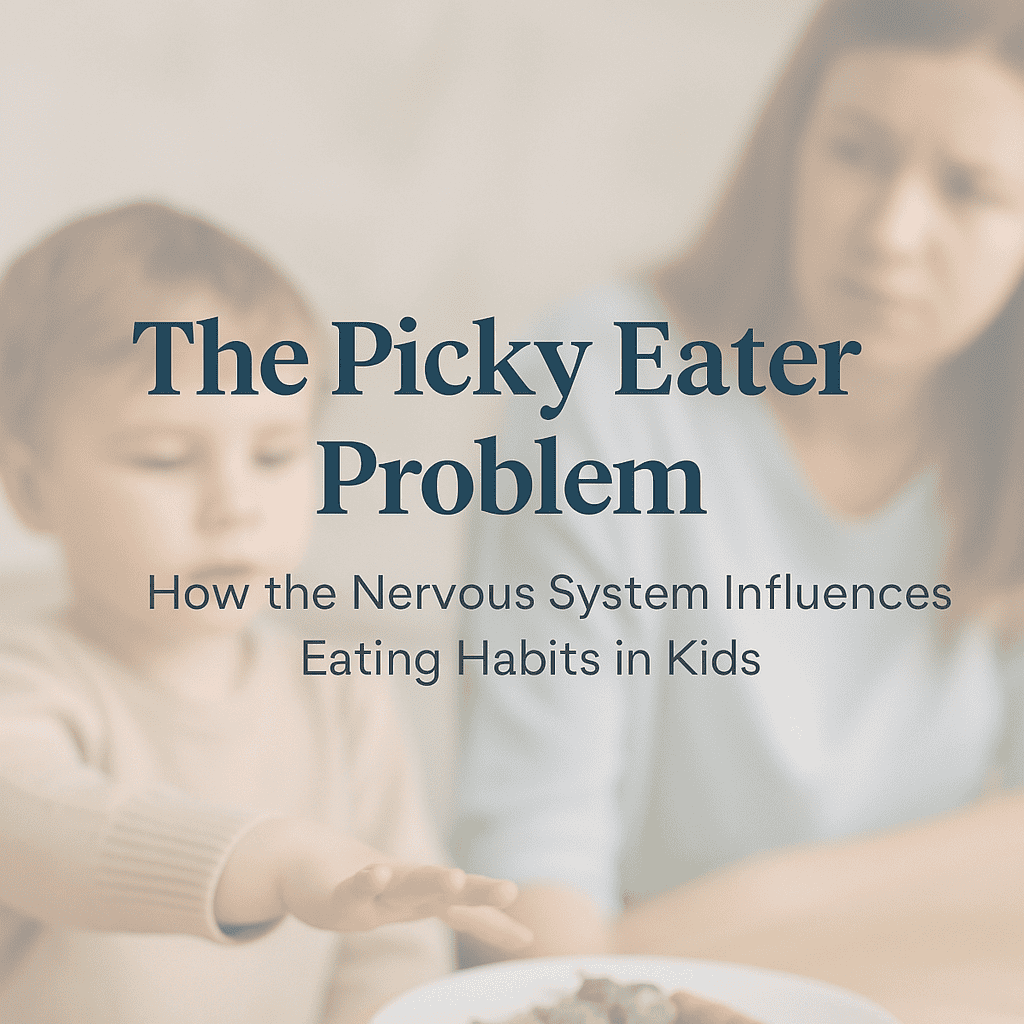Introduction
Most parents chalk it up to a phase.
Your child avoids certain textures, refuses vegetables, or only eats a handful of “safe” foods.
You hear, “They’ll grow out of it.”
But for many families, picky eating isn’t just a phase—it’s a red flag.
At Vital Wellness Chiropractic, we work with many families whose children struggle with extreme food selectivity, oral aversions, or rigid eating behaviors. And often, the root cause isn’t in the mouth… it’s in the nervous system.
What Is Picky Eating—And When Does It Become a Concern?
Picky eating is common in young children, especially during developmental leaps and
toddlerhood. But when it causes:
• Nutritional deficiencies
• Delayed growth
• Family mealtime stress
• Anxiety or meltdowns around food
…it’s no longer a typical stage.
Studies show up to 45% of children have moderate-to-severe picky eating tendencies, with
over 1 in 4 continuing into later childhood.
(Source: Taylor et al., 2015)
The Brain-Body-Eating Connection
Eating involves more than hunger—it’s a full-body process coordinated by the nervous
system:
• The brainstem controls chewing and swallowing.
• The vagus nerve regulates digestion and gut signals.
• The sensory system interprets textures, tastes, and smells.
• The emotional brain processes safety around food.
When the nervous system is dysregulated, kids may experience:
• Gagging or vomiting from textures
• Avoidance of certain temperatures or smells
• Anxiety at mealtime
• Poor chewing coordination
• Resistance to trying new foods (neophobia)
How Does the Nervous System Get Off Track?
From birth (and even in utero), stressors can interfere with nervous system development:
• Birth trauma
• Tongue/lip ties
• Early antibiotic use
• Sensory processing issues
• Chronic fight-or-flight activation
When the brain and body are stuck in stress mode, everything becomes harder to process— including food.
Chiropractic Care & Picky Eating: What’s the Connection?
At VWC, we use INSiGHT scanning technology to detect how the nervous system is
functioning.
We often find that picky eaters show:
• High stress patterns in the brainstem
• Poor vagus nerve tone
• Imbalances in sensory integration
By applying gentle, targeted chiropractic adjustments, we can help:
• Improve communication between the brain and gut
• Reduce sensory aversions
• Support calmer, more regulated responses to food
• Encourage better chewing, digestion, and elimination
This isn’t about forcing kids to eat broccoli overnight. It’s about removing neurological
roadblocks so their body can regulate, explore, and adapt.
Other Strategies That Support Regulation
In addition to chiropractic care, we encourage families to:
• Offer sensory-rich play outside of meals
• Use feeding therapy if needed
• Avoid pressure-based feeding
• Prioritize omega-3s, zinc, and probiotics
• Maintain predictable mealtime routines
Remember: picky eating isn’t always behavioral—it’s often neurological.
Conclusion
If your child is struggling with food, digestion, or mealtime battles—it might be time to look
deeper than the plate.
At Vital Wellness Chiropractic, we help uncover the nervous system imbalances that often underlie picky eating. Through scans, personalized care, and neurologically focused support, we help kids become calmer, more connected, and better able to explore new foods on their terms.
📍 Want to learn more about how your child’s nervous system is functioning?
Book an INSiGHT scan today.
Sources
Taylor CM, Wernimont SM, Northstone K, Emmett PM. (2015). Picky/fussy eating in children:
Review of definitions, assessment, prevalence and dietary intakes. Appetite, 95, 349–359.
Kerzner B, Milano K, MacLean WC, et al. (2015). A Practical Approach to Classifying and
Managing Feeding Difficulties. Pediatrics, 135(2), 344–353.
Chatoor I. (2009). Diagnosis and Treatment of Feeding Disorders in Infants, Toddlers, and
Young Children. Zero to Three Press.



